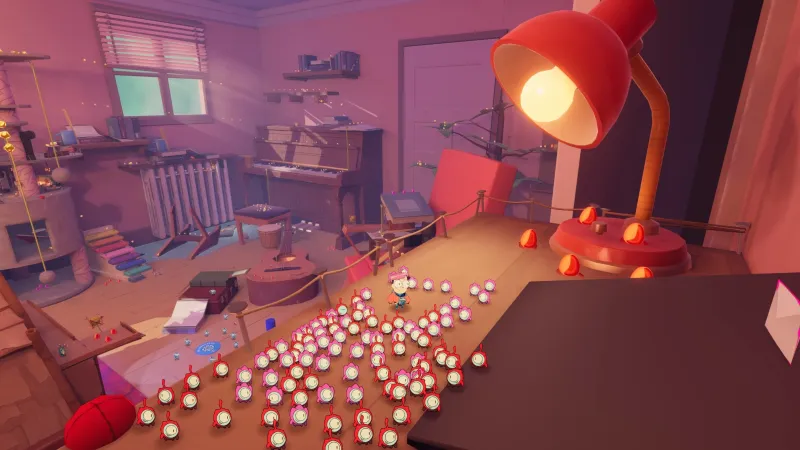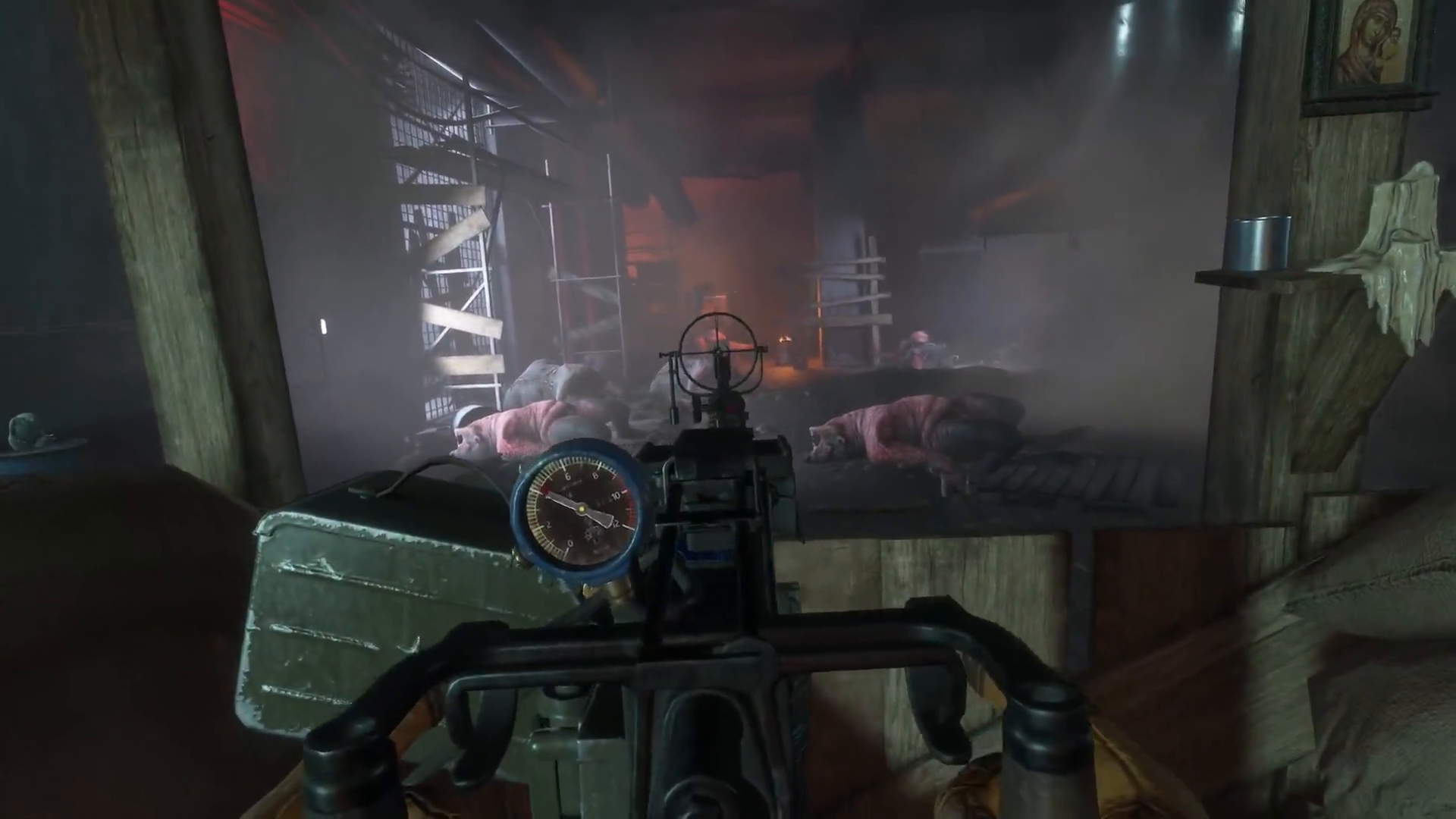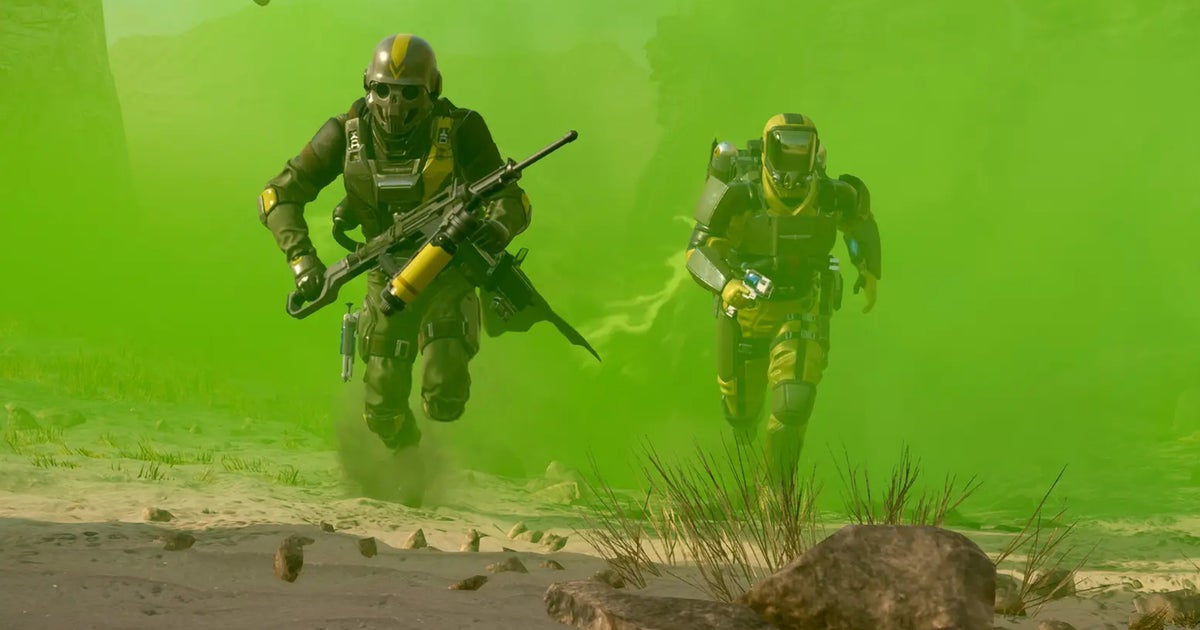Tinykin cleverly combines platforming and puzzle-solving with the minion management of Nintendo’s Pikmin series. Players control a flea-sized astronaut traveling from home Planets to Earth to uncover the true origins of humanity. The explorer’s journey leads him to an ordinary house inhabited by sentient insects who worship a mysterious deity. To return home, the astronaut must assemble a rocket by collecting common household items with the help of small, adorable aliens called Tinykin. As a fan of “small person in a big world” experiences, I was drawn to Tinykin’s premise and world, and its gameplay kept me satisfied to the very end.
The best, if perhaps reductive, way to describe Tinykin’s gameplay would be “Pikmin as a platformer.” Each room in the house features large, intelligently designed playgrounds where players complete platforming challenges and solve environmental puzzles with different types of Tinykin. These include pink varieties that carry items, red versions that explode on impact if thrown, and green Tinykin that stack vertically to form a living ladder. I like how the game introduces each Tinykin step by step, so I can spend an entire level getting used to their unique talents before introducing another.
The well-crafted puzzles get better (and more complicated) as you recruit more Tinykin into your ranks. Some obstacles can be as simple as carrying an oversized device out of the way. Other quests turn into scavenger hunts that challenge you to find creative ways to traverse the world to find and recover scattered items. Solutions are usually relatively easy no matter what form a puzzle takes; Tinykin never makes you rack your brains, at least not for very long. I found this type of challenge relaxing, but engaging enough not to become mundane or overly simplistic. Tinykin’s puzzle solution has a nice flow that keeps the experience moving and makes progressing through it a breeze.
Controlling the Tinykin is simple and intuitive, requiring little more than aiming and launching at specific targets. I also love that Tinykin can run tasks on its own, which allows me to multitask. It feels great to have a dozen helpers working to tow objects to their destinations while I happily collect scattered pollen (used to boost a hover ability), find missing letters for a mail bug and do side quests.
Tinykin is a collectible thon like the old 3D platformers. Collecting items and finding secrets is rewarding, as there is usually a discovery hidden in every nook and cranny. Sometimes it’s pollen bundles; In other cases, it’s a missing part needed for a side errand, e.g. B. to reunite a photo with its frame. The world is a colorful, oversized jungle gym, and I’m struck by how each room feels like an inhabited apartment, while still having clear pathways that appear organically arranged.
I had the most fun freely exploring my tinykin army and tinkering with everything in front of me with my tinykin army, like pushing in protruding books or yanking open the door of a washing machine. From this small perspective, hopping through a kitchen, hallway, or bathroom is a pleasure, and platform jumping feels exceptionally tight. Riding bars of soap down ziplines to get around faster makes it even better, and finding shortcuts like climbing ropes speeds up backtracking. I only wish there was a map because the busy environments make quest givers feel like needles in a haystack when it’s time to turn in a job.
Tinykin feels comfortable in the old-school sense. Its challenges never get muddled, nor does its design reinvent the wheel, and that’s okay. Tinykin executes its handful of ideas exceptionally well, making it a thoroughly enjoyable and relaxing journey that only takes six to eight hours of your time. Don’t let this delightful adventure slip under your radar.








